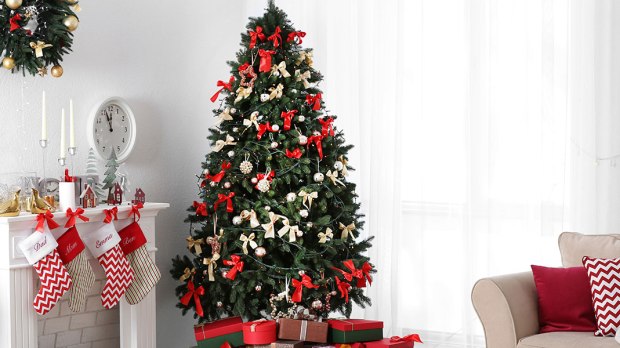When December comes, the world is flooded with green and red, from the decorations in the windows of homes and stores to some of the clothes people wear.
The Christmas spirit overpowers us and we fall into this duo-tone trend. But have we ever stopped to think about why these two colors are the “typical” Christmas colors, and not — for example — silver and gold, as common as they are?
Some people think that it was thanks to Coca-Cola’s depiction of Santa Claus, and others get a little closer to the truth when they say that this Christmas palette of colors comes from the Victorian period, like many of the most popular Christmas traditions.
But according to Dr. Spike Bucklow, a scientist at the University of Cambridge, the use of red and green goes back to medieval churches, which in turn inspired other related uses in England, which eventually were passed on to us.
Medieval origins …
Bucklow discovered that the use of red and green to paint biblical figures was very common on the famous wooden rood screens that separated the nave from the sanctuary in those churches.
However, the reason for this color choice is not yet known with certainty. On one hand, Bucklow says that it could simply be because those colors were easily available; on the other hand, it could also be that they had some symbolic meaning that was known at that time, possibly related to the idea of separation or boundary, since those screens were used to divide the area around the altar from the congregation. This could have been taken as a reference for using the same colors for Christmas, which marks the separation between the old year and the new.
There is also another theory some experts propose, which also relates the use of green and red to medieval times — one that ties it to the works of religious theater that were organized for those who could not read the Bible, during public year-end celebrations.
One of the most famous plays enacted during these celebrations was one representing Adam and Eve, which used an evergreen tree (due to the season, other trees didn’t have any leaves) and red apples to dramatize the Biblical account of original sin.
… or earlier?
Some researchers go further back and say that the origin of the seasonal use of these colors is found in the Roman Saturnalia, a pagan celebration dating from centuries before Christ and which continued to be celebrated annually until the Christianization of the Roman Empire centuries later. During these festivities in honor of the god Saturn, celebrated December 17-25, holly was used as a decoration. Other experts trace the colors to the ancient Celts, who also used holly, an evergreen tree that bears red berries and remains colorful and beautiful during the winter, to celebrate the winter solstice (still not Christmas properly speaking, but again, it’s related to the time of year and to the idea of an ending and a beginning).
Over time, Christianity gave its own meaning to pre-existing traditions. Green became associated with God and eternal life (like the evergreen holly that never dies) and red (like the holly berries) with the Blood of Christ shed to cleanse us of our sins.
As you can see, unfortunately we have yet to discover a single, definitive answer regarding the origin of the use of these two colors (which, by the way, are complementary colors according to color theory). However, we can still conclude that nearly all these explanations have one thing in common: the origin of these colors is rooted in nature, which was created by God.

Read more:
Why is holly associated with Christmas?
This article was originally published in the Spanish edition of Aleteia and has been translated and adapted here for English-speaking readers.

